Cut-up Artist Thomas Allen
Tom Allen's evocative photography turns dime-store novel "dames and dicks", cowboys and heroes, into appealingly lurid, all-American vignettes.
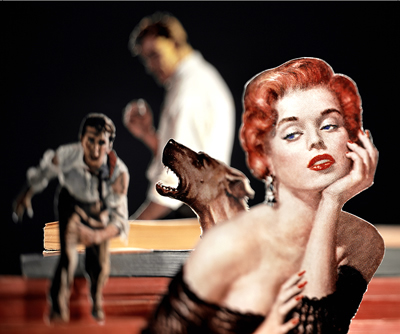
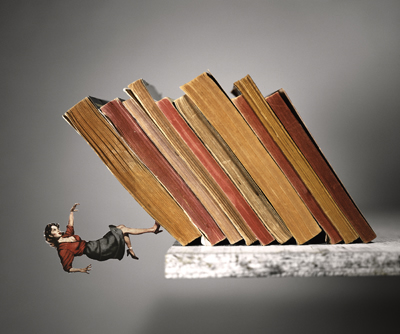
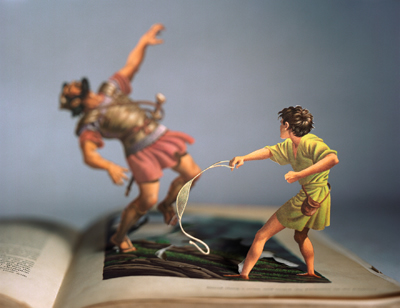
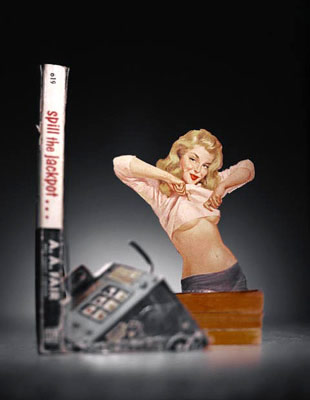
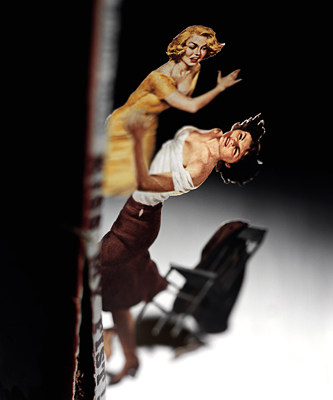
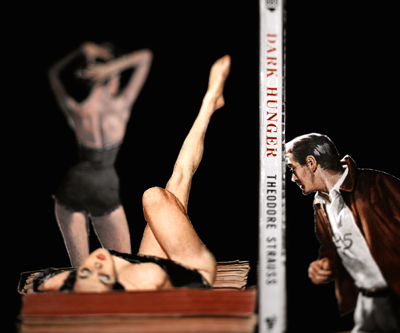
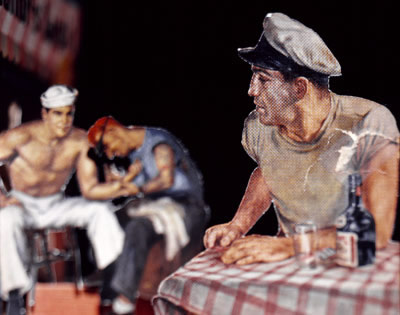
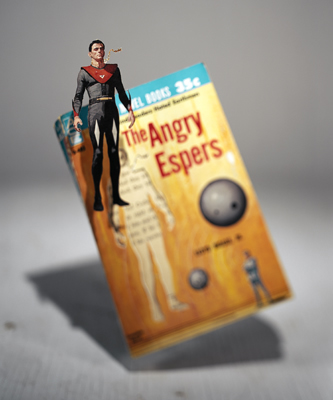

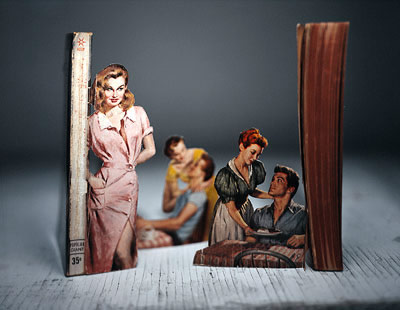
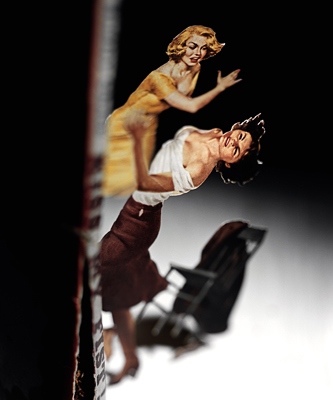
Thomas Allen’s inventive photography has garnered the attention of critics and artists alike (among them, the illustrious Chip Kidd, who was immediately drawn to Red). His work keeps popping up (so to speak)—in galleries, of course, but also on book jackets, and in a number of print publications, among them Virginia Quarterly Review and SeeSaw magazine.
Though Tom lived and worked in Minnesota for years,he just recently moved back to his home state of
He uses kids’ books, anatomy textbooks, and most prominently pulp novels as his source material. Drawing from his fascinations as a kid, his subject matter could be lifted right from Boy’s Life magazine. His photos are filled with cowboys, Indians, and detectives; each image is infused with a kid’s love of space exploration, clear heroes and villains, and dime-store sirens. (Just when you think you’ve got him figured out, though, he mixes it up a little. His newest collection will offer an unexpected take on the Western novel, exploring the homoerotic tinges to these cowboy stories.)
“I started cutting up books as an undergrad. Before that, I was taking old family snapshots and reconfiguring them, cutting words out of dictionaries into tiny slices and reassembling the definitions. I loved pop-up books when I was a kid, making dioramas. I played with train sets. I think it’s just the idea of putting yourself into another world.”
He describes himself as a quiet, introverted child who read lots of books and kept to himself. He only began turning these interests to more serious artistic purposes in college. One of his professors liked his work so much he encouraged him to do more and even to go to grad school. Tom took that advice, and over the course of many years completed his M.F.A. (Tom’ll proudly tell you he put himself through both undergrad and grad school by working for 18 years at Toys ‘R’ Us, a time he remembers fondly.)
When asked about whether or not he uses digital technology to mess with his photos, he responds with an emphatic “No! For me, it’s almost a moral issue. I want to be able to tell people that the photos represent exactly what I saw through the lens when I took the picture. I cut the books, pop out the images and arrange them how I want them. If I want a blank page, I take an X-Acto knife and scrape off the ink; I use tape and pins to fasten the cut-outs the way I want them. The complete illusion is more like a magic trick than anything else—pulled off with props and by fooling the eye. It just wouldn’t be the same if I did all that on the computer—there’s no challenge in that. For me, the art is as much about the process of creation as the end result. It’s all connected.” In fact, he constructs his elaborate scenes and photographs them at home, in his basement.
Each of the resulting prints is part of a limited edition and when they’re sold out, they’re gone. And collectors are buying them… but strangely, he’s been noticed more by New Yorkers than by critics and collectors here at home. (You should know, Thomas Barry carries a selection of his prints for sale here in Minneapolis if you’re interested.) Ultimately, it’s the drama, the mythological scope of these pulp stories that Tom loves. These lurid images are larger-than-life, saturated with the colors of human conflict and angst. In the process of manipulating these characters into such appealing forms, Tom Allen also manages to offer deceptively substantial commentary on pop culture, literature, and a uniquely American mythology.
About the artist: Thomas Allen‘s evocative photographs have appeared on Elmore Leonard’s book jackets, in glossy magazines like Harpers, and on gallery walls across the country. Look for Tom Allen’s gorgeous new photography book, Uncovered (Aperture, 2007) in your local bookstore. Queries about individual photographs can be directed to Thomas Barry Fine Arts Gallery in Minneapolis. Keep up with Tom’s work by visiting his blog, The Art and Farm Report
Susannah Schouweiler is editor of mnartists.org.